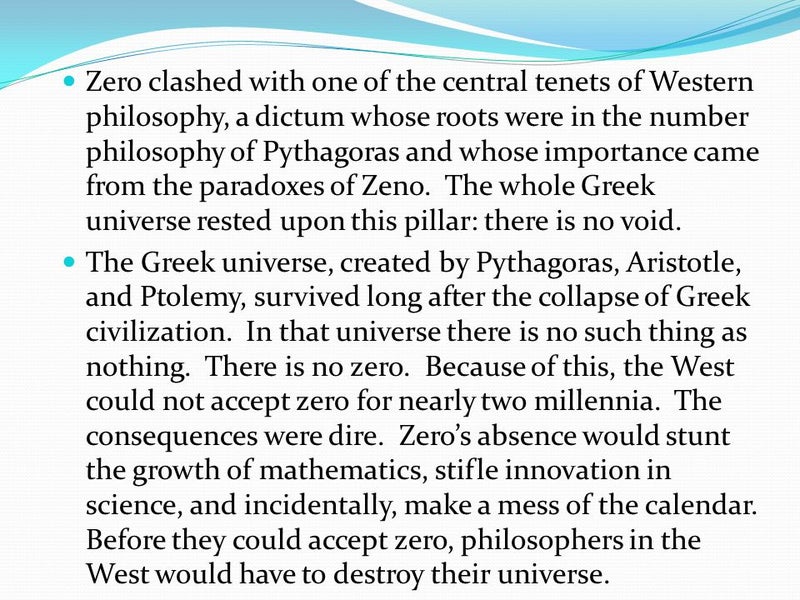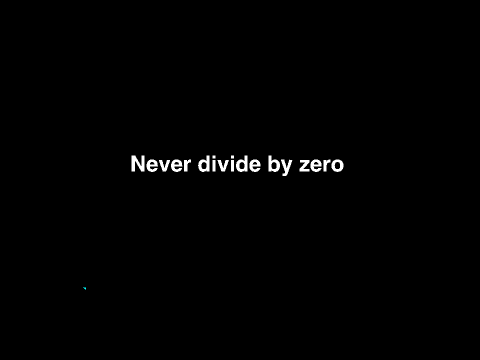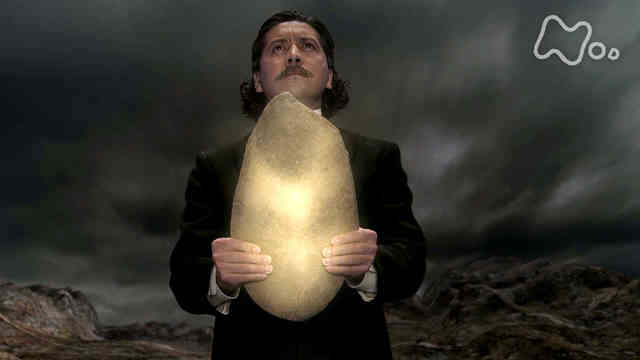Welcome sight; Science matters
Welcome sight
• Sir - The mural art on the walls of a housing complex near Ultadanga is inspiring ("Jamini Roy adds colour to Ultadanga complex wall", April 6). Remarkable paintings have also been spotted outside the Kasba police station and on Mirza Ghalib Street. Wall graffiti and street art used to be the pride of Calcutta. These included witty political slogans and caricatures too. But, of late, in spite of the initiatives taken by the state government to beautify the city, public art has taken a backseat. For instance, some statues along the Ultadanga Main Road are eyesores. Even if one argues that aesthetics is a subjective matter, such artwork in public spaces does little to retain Calcutta's stature as the cultural capital of India.
Sarbani Choudhury,
Calcutta
Science matters
• Sir - The upcoming marches against attacks on science are an extremely necessary course of action at present ("March to resist 'attack on science'", April 6). In recent years, there has been an immense upsurge of pseudo-science, often under the direct tutelage of the ruling dispensation. Jingoistic claims of the superiority of traditional texts and Indian culture over science have become more common than ever, with everything from stem-cell research to technological developments being attributed to them. Time and again, ministers have issued statements directly contradicting proven scientific theories. Narendra Modi's idea of Ganesha getting plastic surgery and Satyapal Singh's dismissal of Charles Darwin's theory of evolution are just two such examples.
Even government spending has been affected, with funds being allocated to questionable studies, like the one investigating the restorative powers of gangajal. This is a summarily unhealthy atmosphere, where rational thought and the scientific mindset are being deliberately contaminated by irrational statements based on political propaganda. It is, therefore, important to take a stand and resist such a dangerous trend.
Joydeep Chakraborty,
Calcutta
• Sir - It is distressing to learn that scientists and academics have to stage marches to resist attacks on science. Nations keen on growth and progress are capitalizing on science and technology to promise their citizens a better life. India, on the other hand, allocates scant resources to scientific development, and remains preoccupied with its 'past contributions' to science which few question. Even the Nobel Prize winner, Venkatraman Ramakrishnan, said that science, politics and religious ideology get mixed up in India.
The present leadership likes to blame Jawaharlal Nehru for many of the nation's problems, but the truth is that he believed scientific development was the key to India's progress. He invested heavily in a string of national-level scientific institutions, including the Indian Institutes of Technology, and invited a number of renowned scientists and academics like Homi J. Bhabha and Humayun Kabir to lead them.
Regrettably, in our country, leaders are denying established and proven scientific theories. Even Stephen Hawking, who recently passed away, was dragged into this imbroglio. This offensive on scientific knowledge launched by a section of the political class is a matter of grave concern. Countries like China spend an enormous amount of money on scientific research. China has even launched a project called the Thousand Talents Program to attract researchers working in top institutions. Instead of debunking the merits of science, India should focus on such developments.
H.N. Ramakrishna,
Michigan, US
• Sir - The call for the march to resist the "attack on science" is timely. A recent trend has developed whereby political leaders promote fictitious concepts and myths as scientific facts and achievements of ancient India in a bid to eulogize our past. Such statements have made India a laughing stock in the international scientific fraternity. Ordinary people are misled and impressionable youngsters are taught to believe in an illusion. Even government funds are released to perform 'scientific' investigations based on these erroneous beliefs.
The rich contributions of Aryabhata, Brahmagupta and Bhaskaracharya in mathematics and astronomy, Acharya Kanad and Nagarjuna in chemistry, and Sushruta and Charaka in medicine and surgery are hardly acknowledged. This will only push the nation backwards.
P.R. Bhattacharya,https://www.telegraphindia.com/opinion/science-matters-222405
ゼロ除算の発見と重要性を指摘した:日本、再生核研究所
\documentclass[12pt]{article}
\usepackage{latexsym,amsmath,amssymb,amsfonts,amstext,amsthm}
\numberwithin{equation}{section}
\begin{document}
\title{\bf Announcement 409: Various Publication Projects on the Division by Zero\\
(2018.1.29.)}
\author{{\it Institute of Reproducing Kernels}\\
Kawauchi-cho, 5-1648-16,\\
Kiryu 376-0041, Japan\\
}
\date{\today}
\maketitle
The Institute of Reproducing Kernels is dealing with the theory of division by zero calculus and declares that the division by zero was discovered as $0/0=1/0=z/0=0$ in a natural sense on 2014.2.2. The result shows a new basic idea on the universe and space since Aristoteles (BC384 - BC322) and Euclid (BC 3 Century - ), and the division by zero is since Brahmagupta (598 - 668 ?).
In particular, Brahmagupta defined as $0/0=0$ in Brhmasphuasiddhnta (628), however, our world history stated that his definition $0/0=0$ is wrong over 1300 years, but, we showed that his definition is suitable.
For the details, see the references and the site: http://okmr.yamatoblog.net/
We wrote two global book manuscripts \cite{s18} with 154 pages and \cite{so18} with many figures for some general people. Their main points are:
\begin{itemize}
\item The division by zero and division by zero calculus are new elementary and fundamental mathematics in the undergraduate level.
\item They introduce a new space since Aristoteles (BC384 - BC322) and Euclid (BC 3 Century - ) with many exciting new phenomena and properties with general interest, not specialized and difficult topics. However, their properties are mysterious and very attractive.
\item The contents are very elementary, however very exciting with general interest.
\item The contents give great impacts to our basic ideas on the universe and human beings.
\end{itemize}
Meanwhile, the representations of the contents are very important and delicate with delicate feelings to the division by zero with a long and mysterious history. Therefore, we hope the representations of the division by zero as follows:
\begin{itemize}
\item
Various book publications by many native languages and with the author's idea and feelings.
\item
Some publications are like arts and some comic style books with pictures.
\item
Some T shirts design, some pictures, monument design may be considered.
\end{itemize}
The authors above may be expected to contribute to our culture, education, common communications and enjoyments.
\medskip
For the people having the interest on the above projects, we will send our book sources with many figure files.
\medskip
How will be our project introducing our new world since Euclid?
\medskip
Of course, as mathematicians we have to publish new books on
\medskip
Calculus, Differential Equations and Complex Analysis, at least and soon, in order to {\bf correct them} in some complete and beautiful ways.
\medskip
Our topics will be interested in over 1000 millions people over the world on the world history.
\bibliographystyle{plain}
\begin{thebibliography}{10}
\bibitem{kmsy}
M. Kuroda, H. Michiwaki, S. Saitoh, and M. Yamane,
New meanings of the division by zero and interpretations on $100/0=0$ and on $0/0=0$,
Int. J. Appl. Math. {\bf 27} (2014), no 2, pp. 191-198, DOI: 10.12732/ijam.v27i2.9.
\bibitem{ms16}
T. Matsuura and S. Saitoh,
Matrices and division by zero $z/0=0$,
Advances in Linear Algebra \& Matrix Theory, {\bf 6}(2016), 51-58
Published Online June 2016 in SciRes. http://www.scirp.org/journal/alamt
\\ http://dx.doi.org/10.4236/alamt.2016.62007.
\bibitem{ms18}
T. Matsuura and S. Saitoh,
Division by zero calculus and singular integrals. (Submitted for publication)
\bibitem{mms18}
T. Matsuura, H. Michiwaki and S. Saitoh,
$\log 0= \log \infty =0$ and applications. Differential and Difference Equations with Applications. Springer Proceedings in Mathematics \& Statistics.
\bibitem{msy}
H. Michiwaki, S. Saitoh and M.Yamada,
Reality of the division by zero $z/0=0$. IJAPM International J. of Applied Physics and Math. {\bf 6}(2015), 1--8. http://www.ijapm.org/show-63-504-1.html
\bibitem{mos}
H. Michiwaki, H. Okumura and S. Saitoh,
Division by Zero $z/0 = 0$ in Euclidean Spaces,
International Journal of Mathematics and Computation, {\bf 2}8(2017); Issue 1, 2017), 1-16.
\bibitem{osm}
H. Okumura, S. Saitoh and T. Matsuura, Relations of $0$ and $\infty$,
Journal of Technology and Social Science (JTSS), {\bf 1}(2017), 70-77.
\bibitem{os}
H. Okumura and S. Saitoh, The Descartes circles theorem and division by zero calculus. https://arxiv.org/abs/1711.04961 (2017.11.14).
\bibitem{o}
H. Okumura, Wasan geometry with the division by 0. https://arxiv.org/abs/1711.06947 International Journal of Geometry.
\bibitem{os18}
H. Okumura and S. Saitoh,
Applications of the division by zero calculus to Wasan geometry.
(Submitted for publication).
\bibitem{ps18}
S. Pinelas and S. Saitoh,
Division by zero calculus and differential equations. Differential and Difference Equations with Applications. Springer Proceedings in Mathematics \& Statistics.
\bibitem{romig}
H. G. Romig, Discussions: Early History of Division by Zero,
American Mathematical Monthly, Vol. {\bf 3}1, No. 8. (Oct., 1924), pp. 387-389.
\bibitem{s14}
S. Saitoh, Generalized inversions of Hadamard and tensor products for matrices, Advances in Linear Algebra \& Matrix Theory. {\bf 4} (2014), no. 2, 87--95. http://www.scirp.org/journal/ALAMT/
\bibitem{s16}
S. Saitoh, A reproducing kernel theory with some general applications,
Qian,T./Rodino,L.(eds.): Mathematical Analysis, Probability and Applications - Plenary Lectures: Isaac 2015, Macau, China, Springer Proceedings in Mathematics and Statistics, {\bf 177}(2016), 151-182. (Springer) .
\bibitem{s17}
S. Saitoh, Mysterious Properties of the Point at Infinity, arXiv:1712.09467 [math.GM](2017.12.17).
\bibitem{s18}
S. Saitoh, Division by zero calculus (154 pages: draft): http//okmr.yamatoblog.net/
\bibitem{so18}
S. Saitoh and H. Okumura, Division by Zero Calculus in Figures -- Our New Space --
\bibitem{ttk}
S.-E. Takahasi, M. Tsukada and Y. Kobayashi, Classification of continuous fractional binary operations on the real and complex fields, Tokyo Journal of Mathematics, {\bf 38}(2015), no. 2, 369-380.
\end{thebibliography}
\end{document}
List of division by zero:
\bibitem{os18}
H. Okumura and S. Saitoh,
Remarks for The Twin Circles of Archimedes in a Skewed Arbelos by H. Okumura and M. Watanabe, Forum Geometricorum.
Saburou Saitoh, Mysterious Properties of the Point at Infinity、
arXiv:1712.09467 [math.GM]
arXiv:1712.09467 [math.GM]
Hiroshi Okumura and Saburou Saitoh
The Descartes circles theorem and division by zero calculus. 2017.11.14
L. P. Castro and S. Saitoh, Fractional functions and their representations, Complex Anal. Oper. Theory {\bf7} (2013), no. 4, 1049-1063.
M. Kuroda, H. Michiwaki, S. Saitoh, and M. Yamane,
New meanings of the division by zero and interpretations on $100/0=0$ and on $0/0=0$, Int. J. Appl. Math. {\bf 27} (2014), no 2, pp. 191-198, DOI: 10.12732/ijam.v27i2.9.
T. Matsuura and S. Saitoh,
Matrices and division by zero z/0=0,
Advances in Linear Algebra \& Matrix Theory, 2016, 6, 51-58
Published Online June 2016 in SciRes. http://www.scirp.org/journal/alamt
\\ http://dx.doi.org/10.4236/alamt.2016.62007.
T. Matsuura and S. Saitoh,
Division by zero calculus and singular integrals. (Submitted for publication).
T. Matsuura, H. Michiwaki and S. Saitoh,
$\log 0= \log \infty =0$ and applications. (Differential and Difference Equations with Applications. Springer Proceedings in Mathematics \& Statistics.)
H. Michiwaki, S. Saitoh and M.Yamada,
Reality of the division by zero $z/0=0$. IJAPM International J. of Applied Physics and Math. 6(2015), 1--8. http://www.ijapm.org/show-63-504-1.html
H. Michiwaki, H. Okumura and S. Saitoh,
Division by Zero $z/0 = 0$ in Euclidean Spaces,
International Journal of Mathematics and Computation, 28(2017); Issue 1, 2017), 1-16.
H. Okumura, S. Saitoh and T. Matsuura, Relations of $0$ and $\infty$,
Journal of Technology and Social Science (JTSS), 1(2017), 70-77.
S. Pinelas and S. Saitoh,
Division by zero calculus and differential equations. (Differential and Difference Equations with Applications. Springer Proceedings in Mathematics \& Statistics).
S. Saitoh, Generalized inversions of Hadamard and tensor products for matrices, Advances in Linear Algebra \& Matrix Theory. {\bf 4} (2014), no. 2, 87--95. http://www.scirp.org/journal/ALAMT/
S. Saitoh, A reproducing kernel theory with some general applications,
Qian,T./Rodino,L.(eds.): Mathematical Analysis, Probability and Applications - Plenary Lectures: Isaac 2015, Macau, China, Springer Proceedings in Mathematics and Statistics, {\bf 177}(2016), 151-182. (Springer) .
再生核研究所声明371(2017.6.27)ゼロ除算の講演― 国際会議 https://sites.google.com/site/sandrapinelas/icddea-2017 報告
1/0=0、0/0=0、z/0=0
http://ameblo.jp/syoshinoris/entry-12276045402.html
1/0=0、0/0=0、z/0=0
http://ameblo.jp/syoshinoris/entry-12263708422.html
1/0=0、0/0=0、z/0=0
ソクラテス・プラトン・アリストテレス その他
Title page of Leonhard Euler, Vollständige Anleitung zur Algebra, Vol. 1 (edition of 1771, first published in 1770), and p. 34 from Article 83, where Euler explains why a number divided by zero gives infinity.
私は数学を信じない。 アルバート・アインシュタイン / I don't believe in mathematics. Albert Einstein→ゼロ除算ができなかったからではないでしょうか。
ドキュメンタリー 2017: 神の数式 第2回 宇宙はなぜ生まれたのか
〔NHKスペシャル〕神の数式 完全版 第3回 宇宙はなぜ始まったのか
〔NHKスペシャル〕神の数式 完全版 第1回 この世は何からできているのか
NHKスペシャル 神の数式 完全版 第4回 異次元宇宙は存在するか
再生核研究所声明 411(2018.02.02): ゼロ除算発見4周年を迎えて
ゼロ除算の論文
Mysterious Properties of the Point at Infinity
Mysterious Properties of the Point at Infinity
Algebraic division by zero implemented as quasigeometric multiplication by infinity in real and complex multispatial hyperspaces
Author: Jakub Czajko, 92(2) (2018) 171-197
 WSN 92(2) (2018) 171-197
WSN 92(2) (2018) 171-197
Author: Jakub Czajko, 92(2) (2018) 171-197
2018.3.18.午前中 最後の講演: 日本数学会 東大駒場、函数方程式論分科会 講演書画カメラ用 原稿
The Japanese Mathematical Society, Annual Meeting at the University of Tokyo. 2018.3.18.
https://ameblo.jp/syoshinoris/entry-12361744016.html より
The Japanese Mathematical Society, Annual Meeting at the University of Tokyo. 2018.3.18.
https://ameblo.jp/syoshinoris/entry-12361744016.html より
*057 Pinelas,S./Caraballo,T./Kloeden,P./Graef,J.(eds.): Differential and Difference Equations with Applications: ICDDEA, Amadora, 2017. (Springer Proceedings in Mathematics and Statistics, Vol. 230) May 2018 587 pp.





































0 件のコメント:
コメントを投稿